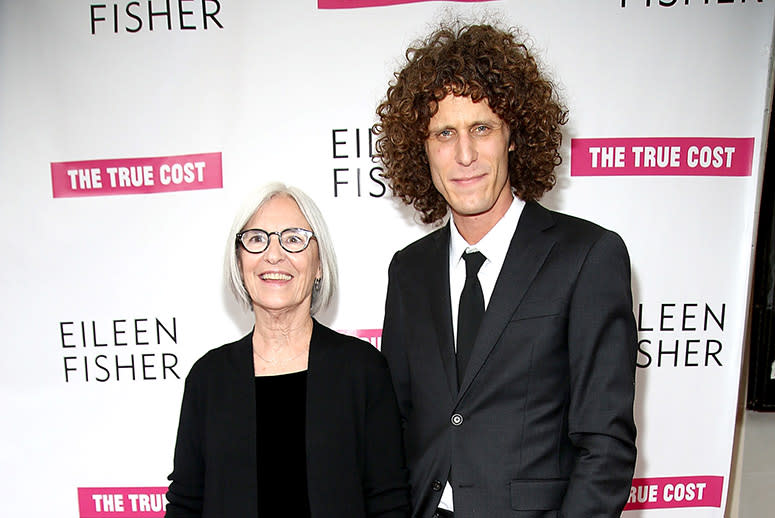‘The True Cost’ Director Andrew Morgan Urges Consumer Activism at L.A. Premiere

Director Andrew Morgan traveled all over the world to complete The True Cost, a film that takes the fashion industry to task for dangerous working conditions, unfair wages, and its harmful environmental effects. But he stayed close to home on the day of the film’s May 29 release, discussing his journey at the Los Angeles premiere.
“I saw a photograph of two boys that were standing in front of a huge wall of 'missing persons' signs,” Morgan told the theater of attendees, some of whom had contributed to the documentary’s initial Kickstarter campaign in 2013. “Something in that photograph made me pick up the paper, and I read about the collapse at Rana Plaza. By the time I finished that article I thought two really distinct things: How is it possible an industry this powerful and profitable is doing business in a way, as I read, that was continually, consistently leading to the loss of human life? But, secondly—and maybe most chilling, as I stood there that morning—how is it possible I’ve never stopped to think about where my clothes come from?”
Those questions led to a meeting with producer Michael Ross, followed by some research to figure out whether the idea had legs. By the end of the week, they had decided it was a film that needed to be made.
One of the documentary’s most captivating stories follows Shima Akhter, a garment worker in Bangladesh. Akhter fights for better working conditions while struggling to provide a better life for her young daughter, whom she must leave in the care of family and friends in a village outside the city of Dhaka, where she is employed.
“We spent time just kind of, not interviewing, but meeting and talking to tons and tons of garment workers, because we knew we wanted to follow someone,” said Morgan. “Shima was actually the last one that we met. It was just one of those things where the second she started talking, he hadn’t even translated what she was saying yet, and there was just something in her eyes that was so bold and so brave.”
Instead of depicting women factory workers as “poor, pitiful people that Western folks need to come and rescue,” the team wanted to show the reality of these women—that they were some of the bravest people they had ever met.
“Let’s try to position them in a struggle for their own fate that we can get behind,” said Morgan. “[Akhter] just embodied that.”
With the film complete and available in eight languages, a question remains: What can consumers do to help improve and regulate the Wild West that is the fashion industry?
“Start with your own wardrobe,” Morgan said. “Become intentional. There’s an amazing way to feel connected to the world around you. Don’t stop there. Begin to raise your voice. If you buy from a brand, ask them where they make stuff. Tell them it matters to you. Say it’s not OK. This is a business model that has been predicated on the notion that you and I won’t care enough to ask questions. There’s a really, really profound—you could look through history and see it proven—way of business changing fast when customers make it known to them.”
For streaming options, visit TrueCostMovie.com.
Related stories on TakePart:
• Why the People Making Our Clothes Are in Danger
• Two Years After Factory Collapse, Fashion's Front Line Still Hopes for Safety
• Is Fast Fashion Unstoppable?
Original article from TakePart

